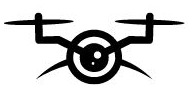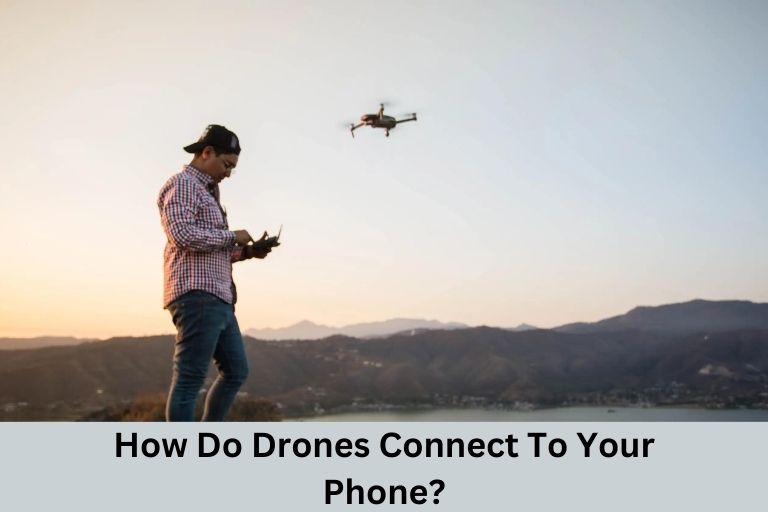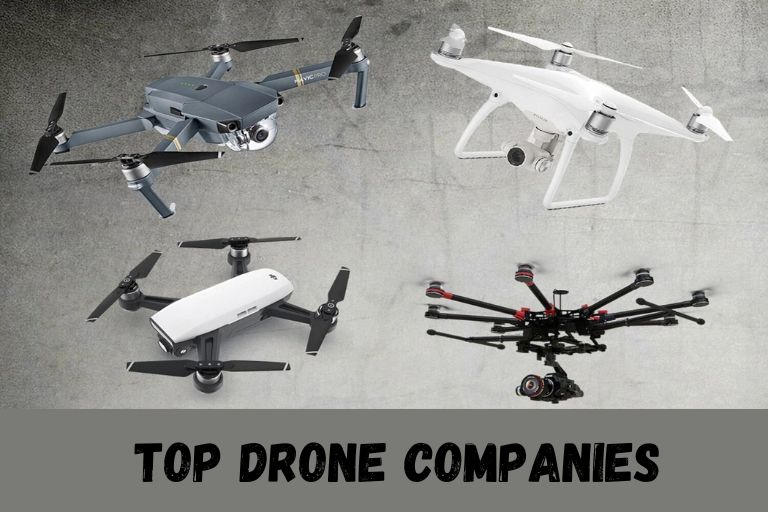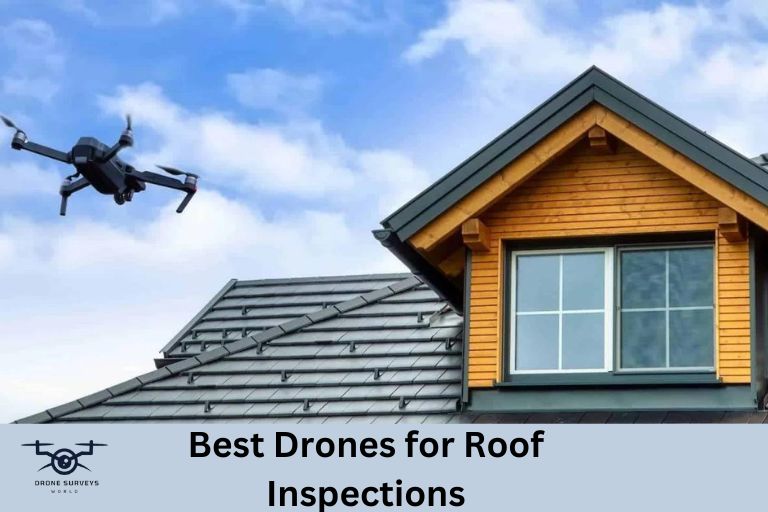Drones have changed many industries like farming and movies by providing great aerial views and collecting data. The important part of drones is the equipment they carry, called payloads. In this guide, drone payloads explained ,we will look at drone technology and the different payloads drones can carry.
Understanding Drone Payloads
From high-resolution cameras capturing stunning aerial footage to infrared sensors detecting heat signatures, drones are equipped with various payloads suited for different tasks. An aspect is the concept of payload drone capacity optimization – finding the perfect balance between weight and flight performance.
Innovations in drone technology continue to push the boundaries of what can be achieved with these flying machines. Payload drones have evolved beyond just cameras and sensors; now, drones can carry delivery packages, agricultural sprayers, and even life-saving medical supplies in emergencies. Understanding the capabilities and limitations of different drone payloads is crucial for maximizing their potential across various industries.
Drone Payloads Explained
Drone payloads are at the heart of drone technology, enabling these unmanned aircraft to perform a wide range of tasks beyond just flying. The most common types of drone payload is cameras, which allow drones to capture high-quality images and videos from unique vantage points.
These images can be used for various applications, including aerial photography, surveying terrain, monitoring crops, and even assisting in search and rescue operations.
Types Of Drone Payloads
Active payloads are crucial components of drones that require power to operate effectively. Cameras are among the most common active payloads used in drone technology, enabling users to capture high-quality images and videos from various heights and angles.
These cameras can range from basic models to advanced thermal imaging cameras, providing diverse functionalities for different industries such as agriculture, construction, and surveillance. Passive payloads do not require external power sources to function efficiently. Examples of passive payloads include sensors for collecting data on environmental conditions or mapping terrains.
By integrating passive payloads into drones, professionals can gather valuable information without the need for continuous power supply, making them ideal for long-duration missions where battery life is a significant concern.
Payload Release Mechanisms
This mechanism plays a crucial role in the successful completion of missions that involve delivering or releasing items. The type of mechanism used can determine the accuracy, efficiency, and safety of the payload drop.
There are two main types of payload release mechanisms: manual and automatic.
Manual mechanisms are often controlled by the drone operator, requiring precision and timing to ensure the payload is released at the desired location.
Automatic mechanisms are programmed to release payloads based on predetermined factors such as GPS coordinates or proximity sensors.

Considerations For Adding Payloads To Drones
Adding payloads to a drone can significantly impact its center of gravity, leading to changes in how it handles weight on the three axes. This shift in balance is crucial to consider when designing and integrating payloads for specific drone missions.
Engineers must carefully assess how the added weight will affect the stability and performance of the drone, especially during flight maneuvers requiring precise control.
Payloads designed for drones need to be meticulously planned and optimized to minimize any adverse effects on the aircraft’s aerodynamics. Factors such as size, shape, and placement of the payload can all influence how it interacts with airflow and alters the drone’s flying characteristics.
Drone Power-To-Weight Ratio And Payloads
The power-to-weight ratio of a drone is like the superhero strength-to-body mass ratio in the tech world. Imagine a drone with the ability to lift weights effortlessly, gliding through obstacles with grace and precision. This golden ratio determines not just its agility but also its payload capacity, making it a vital factor in assessing a drone’s capabilities.
A higher power-to-weight ratio empowers drones to carry heavier payloads while maintaining stability and maneuverability. It’s akin to an athlete being able to sprint faster while carrying additional weights – a testament to efficiency and strength combined in one sleek package.
This dynamic relationship opens up possibilities for aerial photography, delivery services, and even search-and-rescue operations where every gram matters.
| Payload Type | Description | Common Uses | Example |
| Camera Payloads | Equipment for capturing visual data | Aerial photography, videography, surveillance | Optical cameras, Thermal cameras, Multispectral cameras |
| Sensor Payloads | Devices that collect various data types | Environmental monitoring, scientific research | Lidar sensors, Gas sensors, Atmospheric sensors |
| Lidar Payloads | Uses light detection and ranging technology to capture 3D images | Mapping, surveying, autonomous navigation | Lidar sensors |
| Cargo Payloads | Used for carrying different types of cargo | Disaster relief operations, remote areas transportation | Cargo boxes, nets, hooks |
Camera Payloads
Camera payloads in drones are the evolution of technology that has greatly enhanced their capabilities. Modern cameras fitted on drones are equipped with advanced features such as high-resolution sensors, image stabilization, and even thermal imaging.
These technological advancements have expanded the applications of drone photography beyond just aerial shots to include tasks like mapping, surveying, and monitoring.
The use of camera payloads in drones has proven to be a game-changer in industries such as agriculture and environmental conservation. The ability to capture detailed images from a bird’s eye view allows farmers to assess crop health, monitor irrigation systems, and detect areas needing attention.
Sensor Payloads
Sensor payloads are a crucial component of drone technology, enabling the collection of vast amounts of data on various parameters. These sensors can be customized and integrated into drones to gather information on temperature, humidity, air quality, and more with precision and accuracy.
By leveraging sensor payloads, drones can perform tasks such as environmental monitoring, precision agriculture, disaster response, and even surveillance operations with remarkable efficiency.
Lidar Payloads
Lidar payloads are a marvel of modern technology, revolutionizing the way we perceive and interact with our surroundings. By emitting laser pulses and measuring their reflection off objects, Lidar sensors can create highly detailed 3D maps with remarkable accuracy. This capability has applications in various industries, from autonomous vehicles to surveying and mapping.
Cargo Payloads
Cargo payloads play a crucial role in transporting essential supplies to hard-to-reach areas during times of crisis. Medical supplies, such as vaccines and medications, are often transported using cargo drones to remote regions where access is limited. These drones enable quick and efficient delivery, potentially saving lives by ensuring timely medical intervention.
They also carry food and equipment to support communities affected by disasters. Food aid can be flown in using cargo drones to provide sustenance to those in need after a natural calamity or conflict. Equipment like temporary shelters and communication devices can be transported swiftly through the use of cargo drones, aiding in relief efforts.

Impact Of Payload On Drone Performance
Payloads play a critical role in determining the performance of drones across industries.
Weight Impact
The weight of the payload directly influences a drone’s performance, with any excess beyond its maximum lift capacity severely hampering its ability to fly effectively. It’s not just the payload weight that matters, as the drone’s own weight is a critical factor in determining how much extra load it can handle.
This delicate balance between payload weight and lift capacity is crucial for ensuring optimal performance and safe operation of drones in various scenarios.
The impact of weight on a drone goes far beyond simple calculations – it defines the limits within which these aircraft can operate efficiently. Understanding this relationship between weight, payload capacity, and performance is essential for pilots and operators to make informed decisions regarding mission planning and equipment selection.
Battery Impact
Drone enthusiasts often focus on maximizing flight time, but the payload weight plays a crucial role in this equation as well. Every gram added to the drone’s payload results in increased energy consumption from the battery, leading to shorter flight durations.
This interplay between payload weight and battery life underscores the importance of carefully considering both aspects when selecting a drone for specific tasks.
Manoeuvrability Impact
The impact of payload weight on drone Manoeuvrability is a critical factor that often gets overlooked in the world of aerial technology. The physical laws that govern a drone in flight are significantly influenced by the mass of the payload it carries.
As such, heavier payloads can strain the drone’s motors and limit its ability to change direction swiftly or hover with precision. This limitation becomes apparent especially when performing tasks that require intricate movements or quick changes in direction.
Drone Payloads In Different Industries
In the agriculture sector, drones equipped with crop spraying equipment have revolutionized farming practices by allowing for precision application of pesticides and fertilizers. This not only increases efficiency but also reduces chemical wastage and environmental impact.
Drones carrying specialized sensors can provide real-time data on crop health, moisture levels, and other crucial parameters, enabling farmers to make informed decisions for optimal yield.
Commercial Use
In the fast-paced world of commercial operations, drones have become indispensable tools for a wide range of industries. From capturing breathtaking aerial images for real estate promotions to conducting detailed surveys for construction projects, drones offer unparalleled versatility and efficiency in today’s business landscape.
By equipping these unmanned aircraft with advanced payloads such as high-resolution cameras and LiDAR sensors, companies can gather crucial data with precision and speed, revolutionizing their marketing strategies.
The integration of drones equipped with cutting-edge technologies has not only streamlined various commercial processes but also elevated the quality of output across sectors. The ability to utilize thermal imaging cameras on drones has opened up new possibilities in fields like agriculture and infrastructure maintenance, where precise monitoring is essential for optimal performance.
Industrial Use
Drones are changing the industrial sector by providing a cheaper and more efficient way to inspect, monitor, and maintain things. The utilization of sensors, cameras, and LiDAR systems as drones’ payloads enables businesses to conduct inspections without the need for traditional methods like scaffolding or cranes.
This not only saves time but also reduces operational costs significantly. Drones equipped with advanced technology provide high-resolution imagery and precise data that enhance decision-making processes in industries such as manufacturing, construction, and energy.
Agricultural Use
Drones have changed farming by giving farmers high-tech tools to improve crop growth. Sensors in drones help farmers check crop health in real-time, spotting problems like lack of nutrients or pests quickly. This data-driven method lets farmers take specific actions to use fertilizers and pesticides better, reducing harm to the environment.
Military Use
In the military operations, drones have revolutionized surveillance and reconnaissance missions. The deployment of toy drones with advanced payloads such as cameras, sensors, and military equipment has provided unprecedented advantages to military personnel.
Drones help gather important information, track enemy movements, and carry out strategic strikes effectively. They improve military capabilities and reduce risks to soldiers. Toy drones with advanced technology allow armed forces to target accurately from a safe distance. This approach boosts efficiency and lowers the risk of casualties in battle.
Drone Payloads In Specialized Applications
In the realm of drone technology, the significance of specialized payloads cannot be overstated. These versatile tools serve as the backbone for an array of applications, each demanding a tailored approach for optimal performance. When it comes to mapping and surveying UAVs, payloads equipped with high-resolution cameras and LiDAR sensors are essential to capture detailed imagery and terrain data with precision.

Mapping And Surveying
The integration of drones in mapping and surveying applications has revolutionized the way we gather data and create detailed maps of various landscapes. The use of high-resolution cameras and sensors on these drones enables professionals to capture precise images and data that were once only achievable through traditional methods.
With the added advantage of GPS technology, these devices can accurately pinpoint locations, resulting in highly accurate maps and surveys.
Delivery Systems
In the delivery systems, drones have emerged as a revolutionary solution for reaching remote areas that are often inaccessible via traditional means. Their ability to swiftly transport packages to otherwise hard-to-reach destinations has transformed the way goods are delivered, offering a lifeline for communities in need.
The payload capacity of these delivery drones plays a crucial role in determining the types of packages that can be efficiently transported, with varying capabilities depending on factors such as size and weight.
Aerial Photography And Videography
The most significant advancements in aerial photography and videography is the widespread use of drones. These unmanned aircraft have revolutionized how stunning, dynamic footage is captured from previously unreachable perspectives.
With the ability to carry payloads such as high-resolution cameras and gimbals, drones enable filmmakers to create visually striking and creative content that was once only possible with expensive equipment or helicopters. The flexibility and maneuverability of drones allow for seamless transitions between shots, providing filmmakers with increased creative control over their projects.
Data Collection
In of data collection, drones have emerged as powerful tools for conducting inspections and environmental monitoring. These unmanned aerial vehicles can be equipped with a variety of payloads, including sensors and cameras that enable them to gather crucial data on environmental factors such as air quality, water levels, and land use.
The integration of GPS technology in these sensors ensures precise and accurate data collection, paving the way for more informed decision-making in environmental management.
Customizing Drone Payloads
Customizing drone payloads allows users to improve their drone’s performance. By choosing the right payload for a specific mission, users can make their drones better suited for tasks like monitoring the environment or conducting search and rescue missions. Customizing payloads helps users expand the capabilities of their drones.
Customized payloads allow for seamless integration of additional features such as thermal cameras, LiDAR systems, or even delivery mechanisms. This flexibility not only enhances the drone function but also enables users to explore new applications in fields like agriculture, infrastructure inspection, and disaster response.
The ability to adapt and modify UAV payload not only unlocks endless possibilities but also reflects the innovative spirit that drives advancements in drone technology.
Conclusion
Drone Payloads Explained. By considering factors such as weight, size, and functionality, you can select a payload that best suits your needs. As technology continues to advance, the range of available payloads will only increase, providing even more opportunities for innovation. Take the time to research and explore different options to unlock the full potential of your drone’s capabilities.
Frequently Asked Questions
What are the three types of payloads?
Payloads can generally be classified into three main categories: destructive payloads, non-destructive payloads, and hybrid payloads.
How much payload can a drone carry?
The payload capacity of a drone can vary greatly depending on the size and model of the drone.
Can a drone lift 1 kg?
Yes, a drone can lift 1 kg depending on its specifications and capabilities. Most consumer drones have a payload capacity ranging from a few hundred grams to a few kilograms.





